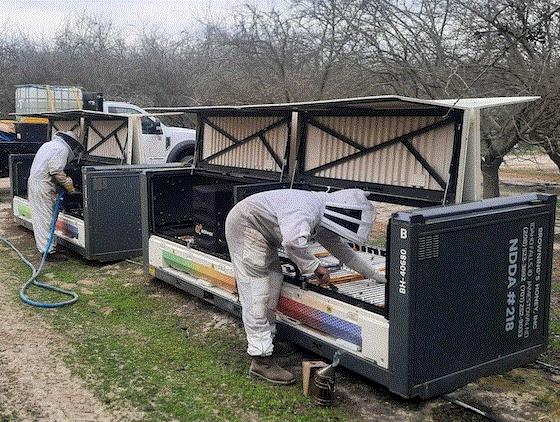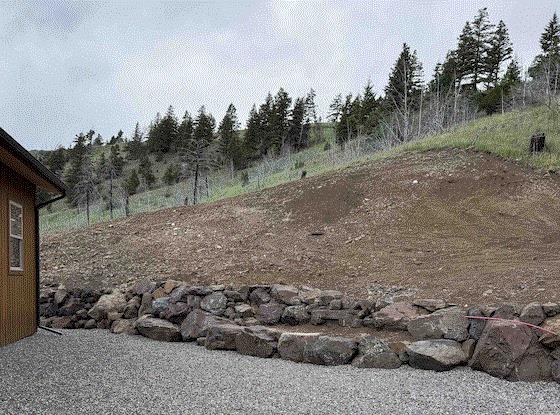Colony Collapses Linked to Miticide Resistance
Earlier this year, I reported on major colony losses among U.S. beekeepers, with commercial beekeepers recording 60% in losses last winter. Now one interesting tidbit of information just came in from the USDA Agricultural Research Service (ARS) related to this.
Researchers there
REPORT finding high levels of deformed wing virus A and B and acute bee paralysis in all recently USDA-sampled bees. These viruses were already known to be associated with colony collapses and losses, and they are typically spread by the also-well-known
Varroa destructor mites. Many beekeepers use miticides to manage these mites.
ARS researchers screened the varroa mites in collapsed colonies, and they found resistance to the miticide amitraz. This finding emphasizes the need for new parasitic treatment strategies.

My colleague Ellen Wells recently reported on a new innovation that might help: a robotic beekeeping company called
Beewise has a solution that kills 99% of varroa without using chemicals. Their solar-powered bee home (pictured above) uses AI to apply heat where and when necessary to kill mites. Their idea recently won a
Fast Company World Changing Ideas Award.

Xerces Society’s Path to Butterfly Recovery
The Xerces Society for Invertebrate Conservation just unveiled a report that provides a roadmap for recovering butterfly populations across the United States. It identifies three main drivers of population decline: habitat loss, certain pesticide use and climate change. The report pulls together core conservation actions, covering hundreds of species and a diverse U.S. landscape.
What can help? Working lands with the right plantings (including at nurseries), home and public landscapes with appropriate plants, community programs, and applied science. The Xerces Society says, “Butterfly habitat should be woven into all parts of our landscapes—farmland, utility corridors, solar arrays, bike paths, roadsides, natural areas, and backyard and community gardens—to provide homes for common and wide-ranging butterflies as well as rare and at-risk species.”
Learn more and read the report
HERE.
Getting Started with Forest Gardens
The National Center for Appropriate Technology just put out a new report called “Introduction to Forest Garden Planning, Design, and Maintenance." Forest gardens or food forests can be incorporated into yards, parks, roadsides and other underutilized spaces. The layered approach mimics early successional forests or forest edges, with multiple layers of edible, medicinal, ornamental plants and fungi sharing space.

Such gardens are beginning to gain renewed attention, but the design differs significantly from our conventional gardens—thus, this guide is a great place for folks to start.
Light-Filtering Solar Panels Grow Better Tomatoes?
In “goods reads” today: check out this
Phys.org article that explores the research being done at the U.S. Department of Energy’s National Renewable Energy Laboratory, working with tomatoes and light-filtering solar panels.
Their work is showing that by filtering out much of the light spectrum and only giving tomatoes the exact spectrum that suits their needs, they can improve plant growth. This concept is called “BioMatched spectral harvesting.” The light that isn’t being used for the plant is instead used to make electricity with the transparent solar panels. It’s technology that could shape future greenhouse designs.
Report from the MT Outpost

As we get closer to the build finish date for the rental cabin, I’m gaining a new appreciation for anyone who has ever launched a business. It has been a wild ride, learning QuickBooks, building out a website and brand, training on a property management system, and trying to set up an entire household with no income coming in yet. It all feels wildly terrifying.
If you’re playing catchup: Here at the Montana Outpost, located near the north entrance to Yellowstone National Park, we’ve been building out a little cabin that will be a vacation rental. Folks can follow along on Instagram at
@backroadcabin.
Like most construction projects, builder delays keep slowing us down. However, last week, a good landscaper friend of ours did some serious hardscaping in just three days. This backyard went from excavation casualty to a lovely rock wall and garden beds. We had a surprisingly large stockpile of rocks and boulders nearby on our land, and Taylor was able to use those to work this magic. I realized this was the first time in my life that I’ve hired out any kind of landscape work. So worth it.




Until next time,

Jennifer Duffield White
jwhite@ballpublishing.com
This email received by 27,105 loyal readers!
Want to be one of the lucky sponsors who reach those readers of GreenTalks? Drop Paul Black a line and he’ll tell you what a bargain it is!
GreenTalks® is a registered trademark of Ball Horticultural Company in the U.S.